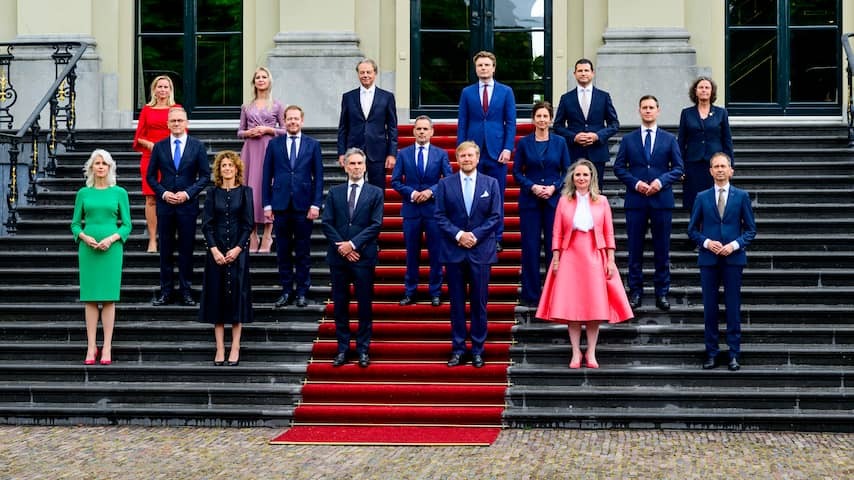
The fall of the cabinet means that cabinet members stop before the four-year term is over. A cabinet fall is only official when the prime minister offers his resignation to the King, as Prime Minister Dick Schoof did on Tuesday.
For the Schoof cabinet, this is early, as the cabinet members took office last year on July 2. So they haven’t been working for a year yet.
The cabinet members submit their resignation, but do not stop immediately: they continue ‘demissionary’. This means that the current ministers will remain in their posts for the time being. They may make decisions and take measures and submit legislative proposals.
But a demissionary cabinet may not implement new policies. It may only continue to implement current policies. The House of Representatives may also decide to declare certain subjects controversial. The demissionary cabinet may then no longer take decisions on those subjects.

A demissionary cabinet can no longer be ‘glued’. Coalition parties can seek a compromise for their disagreement if a cabinet is threatening to fall. But once cabinet members have offered their resignation, this is irreversible. Then it is up to the voters.
The demissionary cabinet remains in office until a new cabinet is formed. New elections must be held first. It is not yet possible to say exactly when they will take place.
In any case, voters in the Netherlands almost always vote on a Wednesday. Moreover, it is unusual in the Netherlands for elections to take place during the holiday period. So it will soon be autumn before we go to the polls.
Before the Netherlands can go to the polls, the parliament must first be dissolved. This means that the members of parliament are removed from their position. In practice, only the House of Representatives is dissolved, because the composition of the Senate would not change.
There is usually some time between the fall of the cabinet and the dissolution of parliament. There is no deadline for this.
Once parliament has been dissolved, the elections must take place within three months. Everything must be arranged within that time: the voting, the voting result and new members of parliament.
The previous cabinet also did not last the whole term. In 2023, the government parties of the Rutte IV cabinet could not agree on a new asylum policy. At the time, the VVD wanted stricter rules for family reunification, but that was not an option for the ChristenUnie. In 2021, the Rutte-III cabinet collapsed due to the childcare benefits scandal.
Why did the Schoof cabinet fall?
The coalition parties PVV, VVD, NSC and BBB could not agree on the asylum policy. PVV leader Geert Wilders wants extra measures in the field of asylum reception. Among other things, he wants to close the borders to asylum seekers, remove status holders from asylum seeker centers and put a stop to family reunification.
According to Wilders, the policy is not fast enough, even though his party has the reins in the hands of Minister Marjolein Faber (Asylum). Wilders wanted a signature under his plans as soon as possible, but the other coalition parties do not want to simply break open the main lines agreement. They want Wilders to first work out his own asylum plans himself. The PVV member then decided to step out of the coalition.